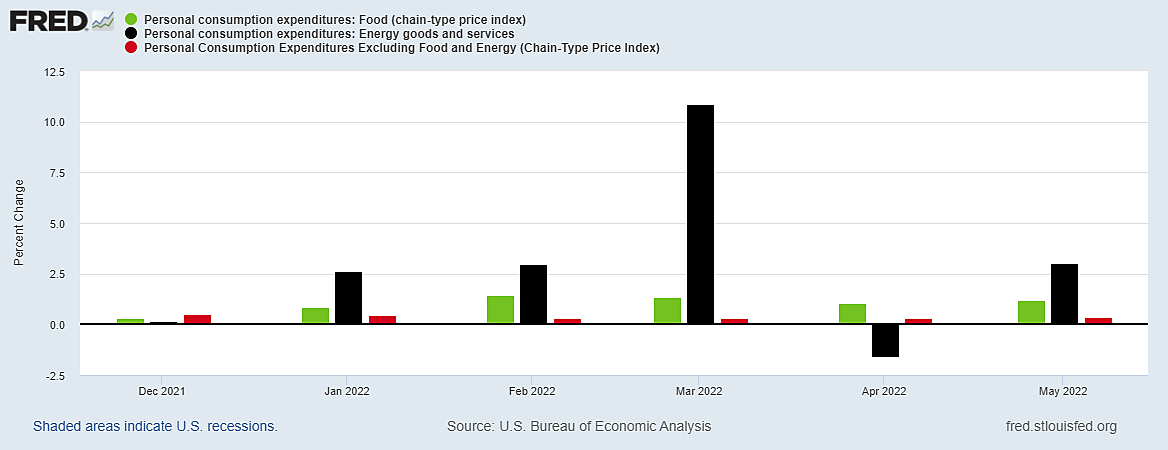Over the Fourth of July weekend, The Wall Street Journal reported that the Biden administration is likely to lift some tariffs on imports from China as Washington tries to combat inflation and Beijing reels from COVID-19-related shutdowns. The report indicates that the tariff “pause” would likely cover consumer goods “such as clothing and school supplies, as well as launching a broad framework to allow importers to request tariff waivers.” Politico, meanwhile, is reporting that the value of tariff relief will be a meager $10 billion out of the approximately $370 billion imposed by the Trump administration. This is better than nothing, but still woefully inadequate.
The U.S. Trade Representative (USTR) is currently conducting a required review of the Trump-era tariffs, the comment period for which expired earlier this week. News reports indicate a rift within the Biden administration: Treasury Secretary Janet Yellen is supportive of removing most of the tariffs in order to put downward pressure on prices, while National Security Adviser Jake Sullivan and Ambassador Katherine Tai, the USTR, are opposed to any tariff relief, citing the supposed “leverage” provided by the tariffs. The Financial Times noted that internal White House skepticism of cutting some tariffs is driven by the president’s desire to “avoid a backlash before the midterm elections from lawmakers who view cutting tariffs as being weak on China.”
Yes, it is true that opportunistic lawmakers and candidates will almost certainly howl about any tariff relief on imports from China, but those same partisan voices are unsparing in their criticism of the Biden administration’s handling of inflation and are already calling him “weak” on China. Either way, the political backlash of tariff relief is likely to be overblown; inflation is top of the mind for voters by a wide margin, and the president has the bully pulpit to counter the inevitable opposition spin.
As I explained recently, loose fiscal and monetary policy are driving up demand. The tariffs act as a serious impediment to increasing supply. Reducing tariffs is not a panacea for reducing inflation, but it could help put some downward pressure on prices. In particular, real tariff relief (i.e., far more than what’s reportedly on tap) could save American families hundreds of dollars per year.
Even before the onset of serious inflation, moreover, the tariffs were a complete failure. They raised prices for consumers; hurt domestic manufacturers reliant on imported intermediate inputs and capital goods; decreased market access for American exporters, particularly the agriculture industry; and led to investment slowdowns and substantial job losses. On top of that, the tariffs utterly failed to induce Beijing to make significant changes to its legitimately concerning international trade and investment practices. Indeed, a former CIA expert on the Chinese economy recently told The Financial Times that, in terms of possible leverage, there was no “compelling reason” to keep the tariffs in place. Other foreign policy experts have echoed that conclusion.
Indeed, if the President really is prioritizing inflation like he claims, even more tariff relief is in order. Save a temporary reprieve on Ukrainian products, for example, the Biden administration has made little effort at removing the Trump administration’s disastrous “national security” tariffs on steel and aluminum imports, including from longstanding allies. Tariffs on imported solar products and washing machines—legacy tariffs inherited from the Trump administration—remain in place. Likewise, the Biden administration has refused to open any market liberalizing free trade agreement (FTA) negotiations with potential trading partners, instead trying to establish a “framework”—without market access, the longstanding cornerstone of FTAs—with spurned commercial partners in Asia. Finally, the White House hasn’t pushed for Congress to reauthorize the Generalized System of Preferences (GSP)—a modest unilateral tariff relief program designed to bolster developing countries and help American consumers—which expired right before Biden took office. As a result, tariffs on imports from GSP beneficiary countries have increased, and Americans are increasingly (and ironically) sourcing covered consumer products from China. That’s a tariff double-whammy.
As my Cato colleague James Bacchus recently noted in a lengthy policy paper, for all of its talk about repairing alliances and undoing the damage of the previous administration, in practice, the Biden administration’s trade policy is a spitting image of the Trump administration’s ill-conceived protectionism.
To be sure, the decision to lift a small number tariffs may provide a little relief for some American families and firms hurt by inflation. It’s also a quiet admission by the White House that Americans, not the Chinese, are paying (and suffering from) the tariffs. Likewise, a renewed tariff exclusion process is a good idea. But these are minor changes — not the wholesale shift in the trajectory of U.S. trade policy that Americans really need. Over the long term, our current protectionist trade policies will raise prices, dampen growth and diminish U.S. geopolitical standing, leading to a poorer and weaker America in the process.
